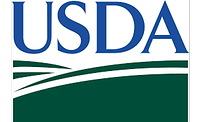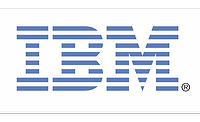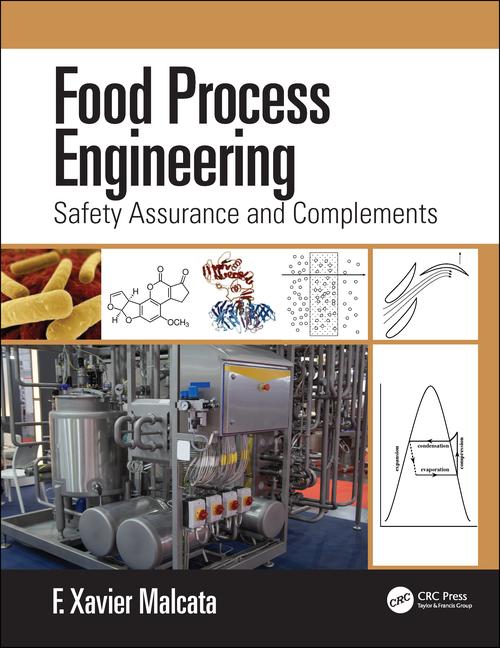Food Safety
Automated food safety solutions can limit foodborne pathogens
Time-temperature measurements offer basis of pathogen containment

The Centers for Disease Control and Prevention (CDC) estimates that major foodborne pathogens cause 9 million illnesses each year. The number of foodborne illnesses motivated the FDA to create the Food Safety Modernization Act (FSMA), which Congress passed.
The Federal Government drafted the FSMA in response to the continuing occurrence of foodborne illnesses caused by these pathogens. To illustrate the scope of the problem, the table below ranks the risks and costs of the 14 leading foodborne pathogens.
Although passed by Congress in 2011, full implementation of the law’s requirements did not begin until September 2016 for most food processing facilities. At the core of the legislation, the FSMA requires a written food safety plan, called Hazard Analysis and Risk-based Controls (HARPC). As with existing HACCP protocols, temperature measurements remain one of the cornerstones of preventive controls in HARPC. Well-established time-temperature controls inhibit the growth of foodborne pathogens. According to the FSMA site at the FDA, the “Use of Time/Temperature Control as a Process Control” final rule is "coming soon." However, the HARPC Draft Guidance provides the likely temperature guidelines regarding time-temperature controls.
FSMA, HARPC, and HACCP
Compared to prior food safety processes based on HACCP plans, the Aberdeen Group reported that under the FSMA, “tighter control, documentation, and tracking of every ingredient and process used throughout the enterprise is now required.” For enterprise compliance and food safety officers, one of the biggest questions is: Who does the FSMA affect? The short answer: the FSMA affects every participant in the food supply chain. A frequently used term related to the FSMA is: Farm-to-fork coverage (including transportation). What about meat processing, which is currently regulated by the USDA/FSIS? If the products of the facility are sold into the food supply chain, the answer is, “Yes! You’re affected also.” Thus, these facilities are dual regulated under both the FSMA and USDA/FSIS regulations.
The key elements of the FSMA are:
- Comprehensive prevention-based controls across the food supply;
- Inspection and compliance to hold the food industry accountable for producing safe food;
- Imported food safety that requires importers to verify that their suppliers have adequate preventive controls and qualified third-party auditors; and
- Response by the FDA which now has mandatory recall authority for all food products.
As we’ve seen, the driving motivation behind the FSMA’s HARPC food safety plan is to identify and prevent the risk of foodborne pathogens in food for human consumption.
Time/Temperature Controls
The FDA has already published its HARPC Draft Guidance on Time/Temperature Controls. It is reasonable to expect that most, if not all, of the risk-based controls regarding temperature in the Draft Guidance will be adopted as the final regulations. The draft guidance contains a detailed table on critical time/temperature limits, provided in the Addendum below.
Temperature Measurement Leads to Record Keeping
The Aberdeen Group recently surveyed a group of 174 food processing executives and asked, “How has FSMA Changed the Business?” 50 percent of respondents ranked “Increase in documentation and record storage” as the number one impact. An additional 36 percent ranked “Investment in technology to improve auditing and documentation” as the second largest impact.
The reason these surveyed executives listed increase in documentation and record storage is simple: Temperature measurement (as well as other FSMA measurement requirements) in food processing applications inherently requires record keeping.
Simplicity is Key
More temperature measurements taken more frequently means a safer food product shipped from your facility. The HARPC draft guidance specifically mentions “checking the temperature of the food with a thermometer or temperature recording device.” Ideally, a temperature recording device would:
- Facilitate rapid in-line temperature acquisition;
- Have sufficient memory to store multiple measurements;
- Wireless connectivity;
- Remote operation; and
- Easy access to the data in near real-time.
Such an automated, cloud-based wireless temperature recording device delivers multiple benefits versus other methods. For instance, a single in-house computer is subject to failure, internal disk crashes, malicious employee actions, and environmental issues (water damage, facility fire, severe weather, electric grid blackouts or brownouts, etc.). The single-computer approach also implies a manual data collection method and the associated well-documented recording and transcription errors. An in-plant IT network storage suffers from many of the same issues.
ROI of Automated Temperature Recording
By contrast, a thermometer connected to an automated temperature recording device eliminates the time needed to record temperature readings on a clipboard. One such example relates to a smokehouse process. Automated temperature recording reduces the time the smokehouse doors are open, cuts heat loss and shortens the smoking process. Further, an automated solution eliminates paper, pencils and clipboards as potential sources of food contamination. Data can be uploaded to the cloud from any connected mobile device. This approach removes the need for retaining paper records in a bank of filing cabinets, minimizing record maintenance costs.
In a cloud-based automated solution, data is immediately accessible for distribution up and down the supply chain. This points to the biggest advantage of all: Rapid data access can identify non-compliant readings almost instantly, preventing costly recalls and negative PR. This capability dramatically shortens the response time to compliance issues and reduces production downtime.
Conclusion
The goal of FSMA is to assure the safety of the food supply in the U.S. and reduce the occurrence of foodborne illnesses for consumers. Specifically, FSMA was enacted to shift the regulatory focus from a reactive to a risk-based preventive stance embodied in the HARPC requirements. FSMA requires that food processing facilities identify and mitigate hazards associated with the development of foodborne pathogens. HARPC regards temperature measurement as an important validation program and an appropriate control technology.
In the Aberdeen Group survey noted above, 86 percent of the food industry executives polled stated that document storage and retention, as well as investment in new data collection, had the biggest impacts of FSMA on their businesses. The TEGAM Bluetooth enabled, cloud-based automated temperature recording solution directly addresses these concerns efficiently and effectively with minimal entry costs.
A cloud-based automated temperature recording device that transmits via Bluetooth:
- Reduces measurement times;
- Identifies temperature anomalies faster;
- Eliminates transcription errors;
- Provides safer and more secure data storage; and
- Offers faster access to data than traditional paper and clipboard recording.
The challenges brought about by FSMA require new solutions that address the need for data collection and integrity without disrupting existing food handling processes.
| Potentially Hazardous Condition | Product Temperature | Maximum Cumulative Exposure Time |
|---|---|---|
| Growth and toxin formation by | 39.2-43°F (4-6°C) | 5 days |
| Bacillus cereus | 44-59°F (7-15°C) | 1 day |
| 60-70°F (16-21°C) | 6 hours | |
| Above 70°F (21°C) | 3 hours | |
| Growth of Campylobacter jejuni | 86-93°F (30-34°C) | 48 hours |
| Above 93°F (34°C) | 12 hours | |
| Germination, growth, and toxin formation by Clostridium botulinum type A, and proteolytic types B and F | 50-70°F (10-21°C) | 11 hours |
| Above 70°F (21°C) | 2 hours | |
| Germination, growth, and toxin formation by Clostridium botulinum type E, and non- proteolytic types B and F | 37.9-41°F (3.3-5°C) | 7 days |
| 42-50°F (6-10°C) | 2 days | |
| 51-70°F (11-21°C) | 11 hours | |
| Above 70°F (21°C) | 6 hours | |
| Growth of Clostridium perfringens | 50-54°F (10-12°C) | 21 days |
| 55-57°F (13-14 °C) | 1 day | |
| 58-70°F (15-21°C) | 6 hours1 | |
| Above 70°F (21°C) | 2 hours | |
| Growth of pathogenic strains of | 43.7-50°F (6.6-10°C) | 2 days |
| Escherichia coli | 51-70°F (11-21°C) | 5 hours |
| Above 70°F (21°C) | 2 hours | |
| Growth of Listeria monocytogenes | 31.3-41°F (-0.4-5°C) | 7 days |
| 42-50°F (6-10°C) | 1 day | |
| 51-70°F (11-21°C) | 7 hours | |
| 71-86°F (22-30°C) | 3 hours | |
| Above 86°F (30°C) | 1 hour | |
| Growth of Salmonella species | 41.4-50°F (5.2-10°C) | 2 days |
| 51-70°F (11-21°C) Above 70°F (21°C) | 5 hours | |
| 2 hours | ||
| Growth of Shigella species | 43-50°F (6.1-10°C) | 2 days |
| 51-70°F (11-21°C) | 5 hours | |
| Above 70°F (21°C) | 2 hours | |
| Growth and toxin formation by | 50°F (7-10°C) | 14 days |
| Staphylococcus aureus | 51-70°F (11-21°C) | 12 hours1 |
| Above 70°F (21°C) | 3 hours | |
| Growth of Vibrio cholerae | 50°F (10°C) | 21 days |
| 51-70°F (11-21°C) | 6 hours | |
| 71-80°F (22-27°C) | 2 hours | |
| Above 80ºF (27ºC) | 1 hour2 | |
| Growth of Vibrio parahaemolyticus | 41-50°F (5-10°C) | 21 days |
| 51-70°F (11-21°C) | 6 hours | |
| 71-80°F (22-27°C) | 2 hours | |
| Above 80ºF (27ºC) | 1 hour2 | |
| Growth of Vibrio vulnificus | 46.4-50°F (8-10°C) | 21 days |
| 51-70°F (11-21°C) | 6 hours | |
| 71-80°F (22-27°C) | 2 hours | |
| Above 80ºF (27ºC) | 1 hour2 | |
| Growth of Yersinia enterocolitica | 29.7-50°F (-1.3-10°C) | 1 day |
| 51-70°F (11-21°C) | 6 hours | |
| Above 70°F (21°C) | 2.5 hours |
Looking for a reprint of this article?
From high-res PDFs to custom plaques, order your copy today!









